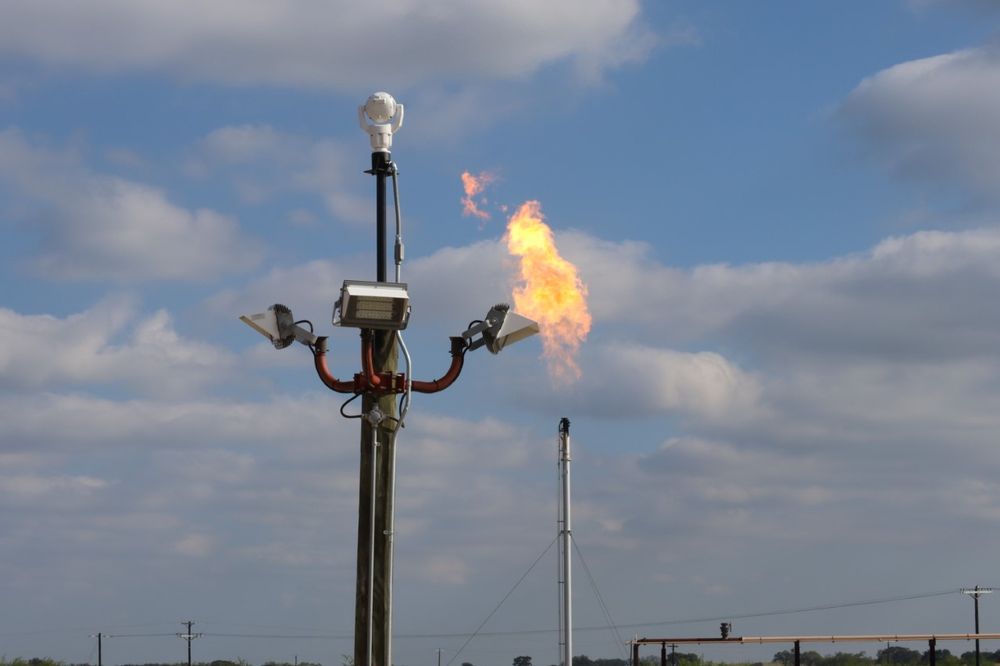Optical Automation (OA) is the term we use to describe the set of tools and technologies that allow Oil, Gas,& Energy (OGE) operators to intelligently monitor remote sites, accurately and expediently diagnose issues, and resolve those issues most efficiently. After working in this industry for decades, we recognized that shifts in regulatory governance and workforce dynamics required new, more flexible solutions. Using machine learning, Optical Automation essentially provides 24×7 monitoring at remote sites, enabling OGE operators to monitor smoke, flame, flares, security, and more.

Before Optical Automation
Historically, camera technology at remote sites was security-based. Operators placed cameras at a number of vantage points, and these were monitored by an operator in a remote control room. The tech watched for anomalies, security breaches, and other events. How quickly and how accurately events were detected was dependent on many factors, e.g., attention span/alertness of the tech, experience of tech, etc. Since there were no proactive alerts about an event, mistakes and delays between diagnoses of an issue and resolution were common. This could result in wasted manpower, lost time, property/resource loss, and significant regulatory penalties. n
Similarly, SCADA systems only gave one data point (e.g., temperature, flow, etc). If they received an alarm based on an event, the technician didn’t necessarily have the information to know if it was good data or bad data or the sensor had broken. So by default, a technician was deployed to the site to check it out.
With fairly limited information as to what the actual issue was, identification and resolution of the issue could take 2-3 round trips to see what’s going on and get additional equipment and/or manpower to fix the issue. With typical response time to a remote site being 1-3 hours, this wastes valuable time and significantly raises operational costs.
These issues and the OGE sector’s increased commitment to environmental stewardship required smarter, more innovative solutions. That’s why we conceived and developed Optical Automation.
After Optical Automation
Simply put, Optical Automation is a more intelligent system of monitoring, assessing, and alerting to any anomalies in a remote site ecosystem. It utilizes the best of the best technology to provide real-time insights and accurate diagnoses of issues so that personnel can act quickly to resolve them. It essentially provides eyes and ears on the ground at remote sites without wasted trips onsite. n
Advanced machine learning capability means that the OA system is constantly evolving to factor out environmental elements (e.g., rain, fog, haze, etc.) and authorized personnel and/or vehicles (semi truck, multi-wheel, truck or car); and wildlife. This reduces or completely eliminates false alerts that would otherwise require a remote operation center personnel/field tech visit. The OA system can also be configured to detect density, color, and size of smoke and flares in real-time. This enables OGE operators to resolve issues quickly and limit impact on the environment. OA also minimizes downtime and automates Method 21 and Method 22 reporting which can reduce possible regulatory fines.
Far from eliminating the need for boots on the ground, OA empowers employees to be more efficient and effective at their jobs.
Benefits of Optical Automation
- Remote site inspection
- Automated Liquid and volatile organic compounds (VOC) detection.
- Remote field maintenance
- Remote Diagnostics
- More efficient utilization of manpower and resources
- Reduction of operating expenses due to decreased site visits
- Decreased downtime of facilities
- Decreased repair costs due to early detection of problems (before failure.)
- 24×7 monitoring; “constant inspection”
- Simplified Method 21 and Method 22 compliance and reporting
- Simplified EPA/DOT/PHMSA and process safety management compliance re: leak detection and P&M Measures
- Supplements reductions in oilfield personnel due to industry downturn, COVID pandemic, older workforce now retiring, and lack of interest by younger workers. n
In the current environment of economic uncertainty and increased scrutiny/regulation of the Oil, Gas, and Energy sector, now is the time to invest in Optical Automation. We have the solutions and expertise you need. Contact us to learn more.